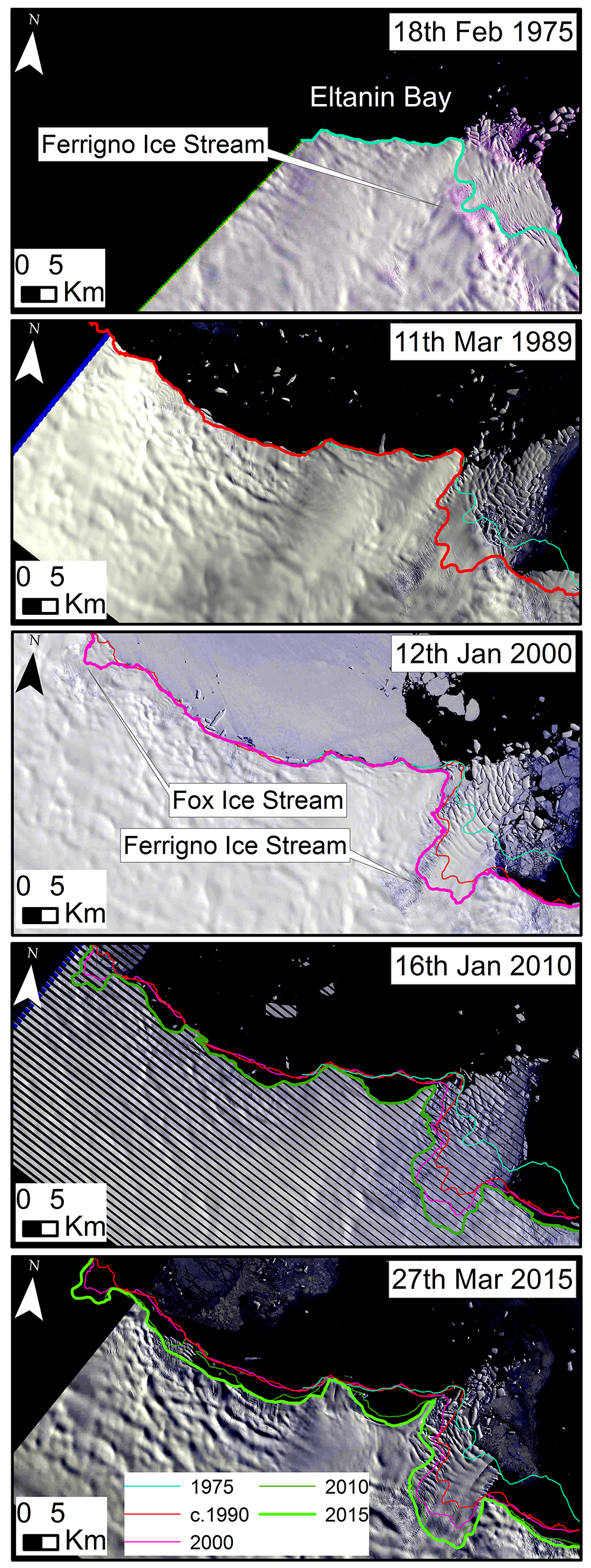
A study of images along 2000 kilometers of West Antarctica’s coastline has shown the loss of about 1000 square kilometers of ice – an area equivalent to the city of Berlin – over the past 40 years.
Researchers were surprised to find that the region has been losing ice for such a length of time. Their findings will help improve estimates of global sea level rise caused by ice melt.
Forty Years of Data
A research team from the University of Edinburgh analysed hundreds of satellite photographs of the ice margin captured by NASA, the United States Geological Survey (USGS) and the European Space Agency (ESA).
They found that ice has been retreating consistently along almost the entire coastline of Antarctica’s Bellingshausen Sea since satellite records began.
The team also monitored ice thickness and thinning rates using data taken from satellites and the air. This showed that some of the largest changes, where ice has rapidly thinned and retreated several miles since 1975, correspond to where the ice front is deepest.
Warmer Ocean Temperatures to Blame
Scientists suggest the loss of ice is probably caused by warmer ocean waters reaching Antarctica’s coast, rather than rising air temperatures. They say further satellite monitoring is needed to enable scientists to track progress of the ice sheet.
Their study, published in Geophysical Research Letters, was carried out in collaboration with Temple University in the US. It was supported by the Carnegie Trust for the Universities of Scotland, the Natural Environment Research Council and the ESA.
Frazer Christie, a PhD student in the University of Edinburgh’s School of GeoSciences, who co-led the study, said: “We knew that ice had been retreating from this region recently but now, thanks to a wealth of freely available satellite data, we know this has been occurring pervasively along the coastline for almost half a century.”
Dr Robert Bingham, also of the School of GeoSciences, said: “This study provides important context for our understanding of what is causing ice to retreat around the continent. We now know change to West Antarctica has been longstanding, and the challenge ahead is to determine what has been causing these ice losses for so long.”
Their study was carried out in collaboration with Temple University in Philadelphia. It was supported by the Carnegie Trust for the Universities of Scotland, the Natural Environment Research Council and the ESA.
Further Reading:
+ Scientists have found yet another part of Antarctica that may be in trouble, Washington Post
+ Antarctic images reveal decades of ice loss, AGU






